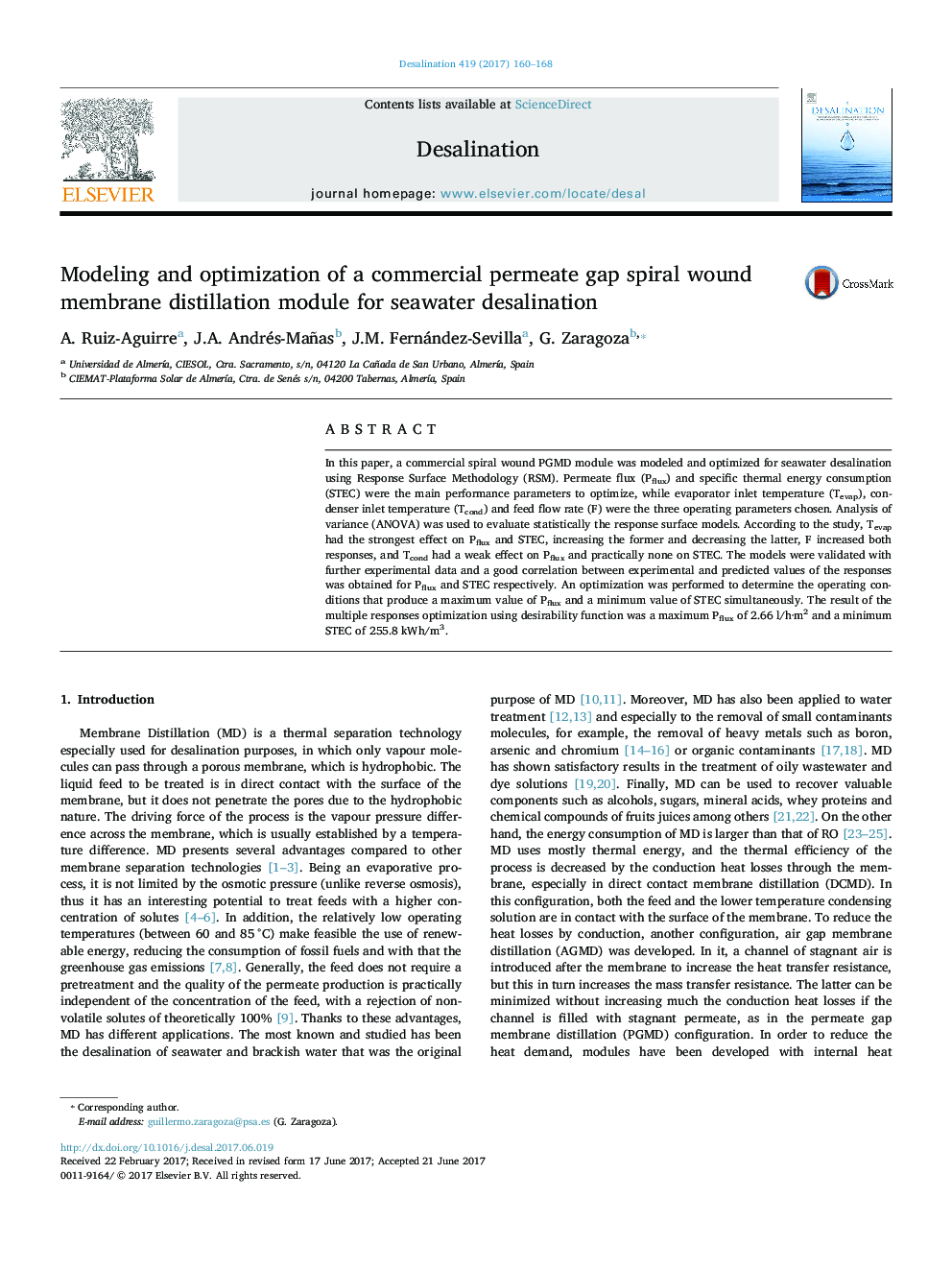| Article ID | Journal | Published Year | Pages | File Type |
|---|---|---|---|---|
| 4987693 | Desalination | 2017 | 9 Pages |
Abstract
In this paper, a commercial spiral wound PGMD module was modeled and optimized for seawater desalination using Response Surface Methodology (RSM). Permeate flux (Pflux) and specific thermal energy consumption (STEC) were the main performance parameters to optimize, while evaporator inlet temperature (Tevap), condenser inlet temperature (Tcond) and feed flow rate (F) were the three operating parameters chosen. Analysis of variance (ANOVA) was used to evaluate statistically the response surface models. According to the study, Tevap had the strongest effect on Pflux and STEC, increasing the former and decreasing the latter, F increased both responses, and Tcond had a weak effect on Pflux and practically none on STEC. The models were validated with further experimental data and a good correlation between experimental and predicted values of the responses was obtained for Pflux and STEC respectively. An optimization was performed to determine the operating conditions that produce a maximum value of Pflux and a minimum value of STEC simultaneously. The result of the multiple responses optimization using desirability function was a maximum Pflux of 2.66 l/h·m2 and a minimum STEC of 255.8 kWh/m3.
Related Topics
Physical Sciences and Engineering
Chemical Engineering
Filtration and Separation
Authors
A. Ruiz-Aguirre, J.A. Andrés-Mañas, J.M. Fernández-Sevilla, G. Zaragoza,
